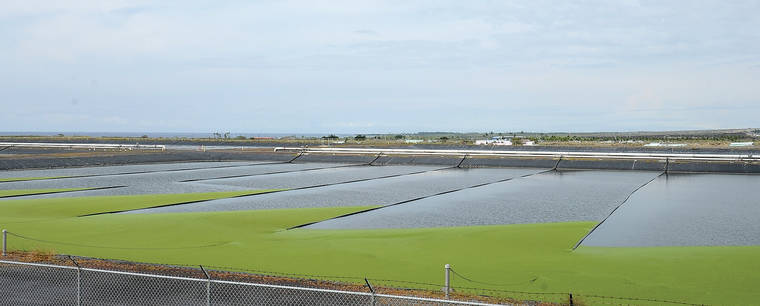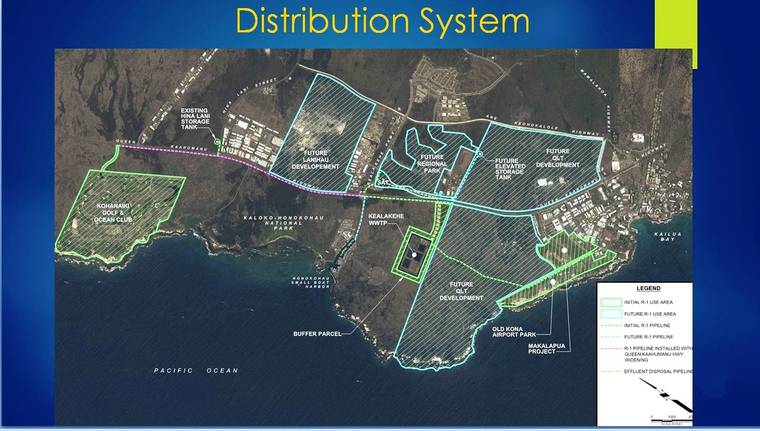Mayor Mitch Roth’s top environmental official is taking a hard look at the advisability of upgrading Kealakehe Wastewater Treatment Plant to produce R-1, the highest grade of recycled water, after the cost of the 20-year-old plan ballooned to $160 million.
“This is the $160 million question. Do we really need to upgrade to R1 water now at this time?” Environmental Management Director Ramzi Mansour told a County Council committee Tuesday. “The design as proposed, I think we need to shelf it and find stakeholders willing to use the current water.”
R-1 water is recycled effluent that has been oxidized, filtered and disinfected to a level it can safely be used to irrigate crops, pastures, parks and golf courses, wash and power-wash surfaces, fill decorative fountains and for myriad other applications. R-2 water, which the county is currently producing but not using, has undergone similar oxidation and disinfection treatment, but hasn’t been filtered. It can be used for underground irrigation of some food crops, pastures, golf courses and parks, among other uses.
The sewer plant, built to handle 5.3 million gallons of wastewater per day, currently averages about 1.8 million gallons per day with 1,711 connections, Mansour said. The $160 million price tag to take the plant to R-1 water includes $35 million for aquifer treatment, $25 million for a subsurface wetland and $20 million for pipeline, among other expenses.
The wastewater is currently processed through five aerated lagoons and then discharged into a sump where it subsequently percolates through the soil. At that stage, it’s of R-2 quality, Mansour said.
The department has been talking with stakeholders for the past two years but has yet to find anyone interested in taking the recycled water, he said. About $11 million has so far been spent for design and planning.
A much more pressing need is for the county to fix about two miles of sewer line along Alii Drive that’s leaking and allowing saltwater intrusion into the system, he said.
“We probably could put this money to better use,” said Hilo Councilman Aaron Chung.
Mansour noted that the Kealakehe operation is currently in full compliance with state and federal environmental requirements. Still, the county is monitoring a U.S. Supreme Court ruling in a similar situation on Maui that could have ramifications here.
“You already have the resource. We need to find a user for it,” Mansour said. “We could argue it’s already being treated based on our data. … That’s why we recommend trying to capture it as R-2 and send it somewhere else.”
In addition, some 7,000 cesspools in West Hawaii alone need to somehow be dealt with, and property owners near sewer lines who have not yet connected need to be sent enforcement letters and a regional master plan needs to be created, Mansour said.
The county needs a plan for routine maintenance, but many of the problems still boil down to money, Mansour said.
One option he’s recommending is to initiate a sewer hookup fee for new structures, similar to water hookup fees in the county Department of Water Supply. The water department levies a facilities charge for new hookups from $1,319 to $1.6 million, depending on the size of the meter.
Puna Councilman Matt Kanealii-Kleinfelder said the county not that long ago implemented annual increases in monthly sewer fees over five years.
“There was a plan for the incoming increases to cover expenses and maintenance,” Kanealii-Kleinfelder said.






